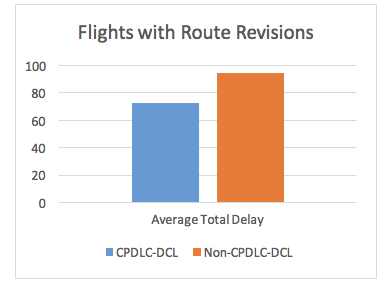The Federal Aviation Administration (FAA) has implemented Controller-Pilot Data Link Communications (CPDLC)-Departure Clearance (DCL) service at a large number of busy airports. CPDLC-DCL allows Air Traffic Control (ATC) to send departure clearances through digital communications, rather than voice communications. The operator can accept the clearance and insert it into the Flight Management System (FMS) with little to no ambiguity of what has been communicated to the flight crew. This digital communications procedure is much more efficient and accurate than traditional voice clearance read-backs.
Case Study: Baltimore/Washington International Thurgood Marshall Airport
Located 9 miles south of downtown Baltimore is the Baltimore/Washington International Thurgood Marshall Airport (KBWI). Out of the three major airports serving the Baltimore/Washington metropolitan area, KBWI is the busiest (by passenger count), serving over 25 million passengers per year. According to KBWI's website, total daily arrivals and departures average as follows:
- Scheduled Domestic Passenger Flights: 634
- Charter Passenger Flights: 2
- International Nonstop Flights: 24
- Cargo Flights: 10
In August of 2016, KBWI became CPDLC-DCL operational during the FAA's Phase 1 of its tower service implementation.
Study Results: Significant Time Savings

| Average Delay Savings | 21.3 Minutes |
| Total Time Savings | 106.5 Minutes |
Just a few days after becoming CPDLC-DCL operational, KBWI experienced severe weather; thunderstorms, and heavy precipitation and wind shear. This resulted in a 4-hour Severe Weather Avoidance Plan (SWAP) event, with changing weather conditions requiring new routes for aircraft awaiting departure.
CPDLC-DCL operational aircraft received revisions to load, WILCO, and verify their clearance with their dispatch faster and more efficiently. On average, these aircraft received over 21 minutes less of a departure delay than non-CPDLC-DCL aircraft. To an aircraft operator, this could be a significant savings over the course of a year with an aircraft that has a $2,000-$3,000 per hour operating cost, let alone the value of the passengers' time.
"This was just one weather event. An operator will see savings every day when operating out of busy airports. You don't have to wait in line to receive your voice clearance. With CPDLC-DCL, you just log-on and you have your clearance within seconds, then call ground to taxi." – Carey Miller, Director of Business Development & Pilot, Universal Avionics
Additional Information
To equip for CPDLC-DCL, you'll need a Communications Management Unit (CMU) and Satellite-Based Augmentation System (SBAS)-enabled Flight Management System (FMS), such as Universal Avionics UniLink® UL-800/801 and [SBAS-FMS].
Download our free White Paper to learn more about how CPDLC can benefit your operations: "Understanding Data Comm Systems with FANS 1/A+, CPDLC DCL and ATN B1" white paper.

